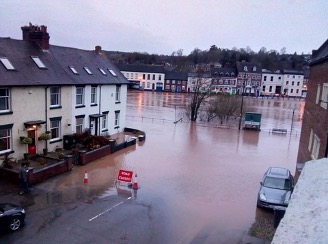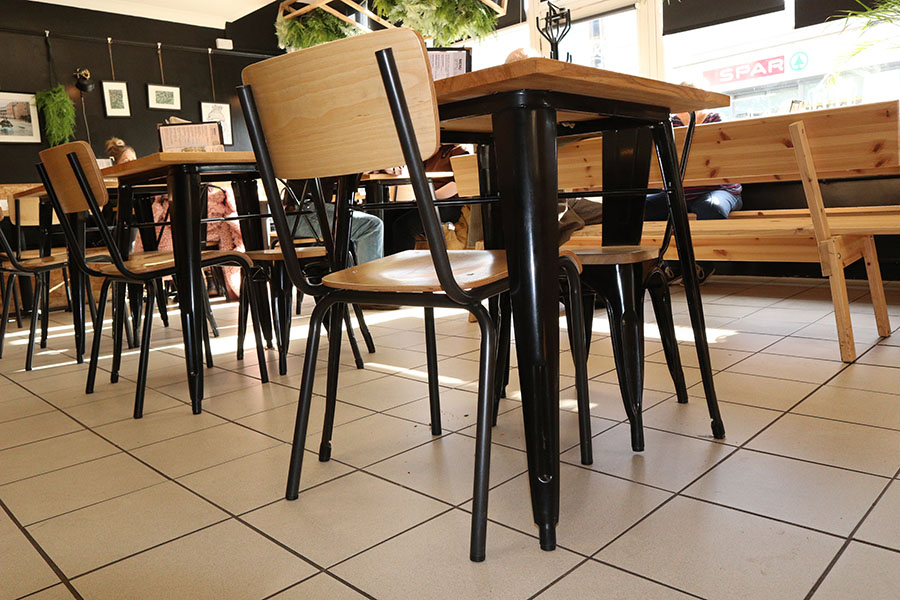
At a building scale, homes and businesses can be modified with Property Flood Resilience (PFR) to reduce the impact of flooding and improve resilience.
Property Flood Resilience refers to measures and practices that reduce the impact of flooding on buildings and their occupants. These measures are essential in areas prone to flooding and can work alongside traditional engineered flood defences and Nature-based Solutions. PFR can help minimise flood damage, lower repair costs, reduce the recovery and reoccupation time and increase the safety of occupants during and after a flood event.
There is a wide range of PFR measures which should be considered on a case-by-case basis. For each property, the measures used will be influenced by the source of the flood, the flooding level, the context of the building, the people using it and their budgets.
A briefing note with responses to a series of PFR Frequently Asked Questions has been produced which can be shared and used by anyone.
Flood preparation is also used to improve resilience. This is where the risk of flooding is understood and people prepare for floods by signing up to flood warnings, as well as producing and following a flood plan. It is relevant to both flood resistance and recoverability approaches.
PFR is split into three main activities:
Improving the understanding of flood risk and planning for potential flooding with flood plans, maintaining and using PFR products etc
Physical measures (barriers, covers etc) that should limit flood water entering a building. The measures aim to reduce water entering the building, reducing damage and disruption.
Measures to adapt the internal property to limit the damage caused if water does enter a building to speed up recovery and reoccupation.
Follow these links for further information on flood resistance, flood recoverability and flood preparedness.


PFR doesn’t need to be expensive. There are many cost-effective changes that can be made to a property that will make a significant difference. Having never experienced flooding, and/or living on a hill doesn’t mean that the property won’t experience flooding in the future. Climate change and urbanisation is increasing the risks of flooding. The most recent English flood risk assessment indicated that 6.3 million properties are at risk of flooding.
Flood recoverability and resistance measures can be combined and when PFR is used together with good flood preparation, it gives people time to fit PFR measures, implement flood plans and move people, pets and valuables to safety.
Flooding cannot be prevented, and absolute protection for flooding is very challenging. There is likely to be some level of residual flood risk. PFR may have its limitations, but it can significantly reduce the vulnerability of a property and reduce the impact of flooding.
In the UK there are several standards and certifications related to Property Flood Resilience. These aim to improve confidence and consistency in the way that buildings are designed, constructed, and maintained, in order to be resilient to flooding.
Homeowners and businesses looking to enhance the flood resilience of their properties should work with professionals and products that comply with these standards and certifications. These measures help provide confidence that approaches to flood risk management and flood resilience are reliable, effective, and compliant with industry good practice.
The PFR Code of Practice (CoP) produced by the Construction Industry Research Information Association (CIRIA) and freely available sets the benchmark for those delivering and managing PFR and includes six standards specifying what should be achieved when delivering PFR. Based on effective communication and a proportionate approach to PFR delivery (that considers the existing flood resilience of the property and circumstances for the end user), it provides a process that can be used to plan, design, construct and maintain PFR. Accompanied by supporting guidance, it explains how the standards can be met and how a six staged process aligned with the standards supports the CoP and follows good practice. An overview of the Code of Practice is provided below.
| PFR delivery phase | What happens | Code of Practice Stage |
| Design | Understanding the flood source and how flooding may affect the property. Undertaking an independent survey to understand the existing level of flood resilience and how water may enter the property. Understanding the needs of the end users. Developing options, a design and specification for PFR measures to improve flood resilience. | 1. Hazard assessment 2. Property survey 3. Options development and design |
| Construction | Finalising the design and specification of PFR measures. Installing the PFR measures. Ensuring everyone is happy with the work and checking PFR measures are appropriately installed. Providing a handover pack so end users understand how the PFR measures work and the associated maintenance requirements. | 4. Construction 5. Commissioning and handover |
| Operation and maintenance | Those responsible (likely to be the end user) understand what to do in the event of a flood. Deploying, operating, storing and maintaining PFR measures. | 6. Operation and maintenance |
There is a useful animation providing an overview of the Code of Practice and how it can help with the delivery of PFR.
In the UK, the British Standards Institution (BSI) produces technical standards on a wide variety of products and services and also supplies certification and standards on flood risk management and flood resilience.
This replaces the PAS1188 specification for flood protection products. It sets a benchmark for manufacturers developing PFR measures, particularly those providing active and passive resistance measures. It covers products like flood doors, barriers, wall sealant systems etc. Compliance with BS 851188 helps ensure that these products are effective in protecting properties from flooding. However, they need to be installed in accordance with the Code of Practice for PFR and by an appropriately qualified person.
This British Standard gives guidance on how to improve the resilience of buildings through the consideration of resistance and recoverability to reduce the impacts of flooding from all sources, using suitable materials and construction details. Specifically, it provides guidance on:
The Kitemark is operated by the BSI and the certification can be obtained for various PFR products, such as flood barriers and flood doors. This certification indicates that the product has been tested and meets specific quality and performance standards.
Guidance available from CIRIA outlining how buildings should be repaired following flooding. The guidance covers damage, surveys, drying, decontamination and repairs.
Based on the Code of Practice for PFR, the Chartered Institution for Water and Environmental Management (CIWEM) is developing a Specialist Register for PFR Professionals. To become registered professionals involved in the delivery of PFR (e.g. surveyors, contractors) one will need to complete accredited PFR training and demonstrate required knowledge and experience of relevant processes. Professionals will be independently assessed against the competencies required for PFR and the necessary stages of the Code of Practice for PFR.